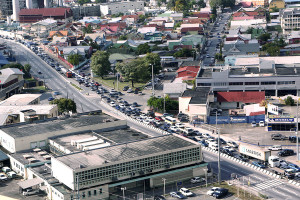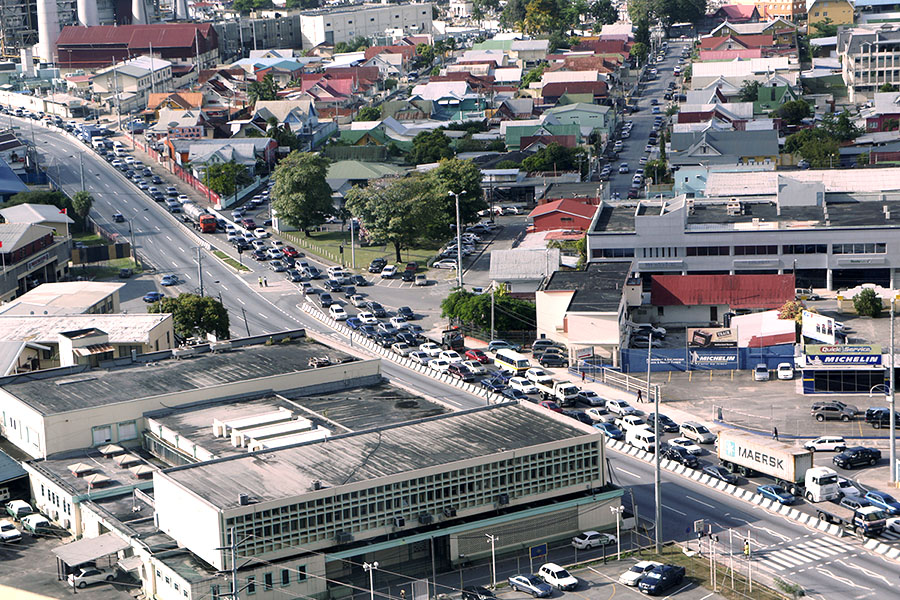 An escalating war is being waged in cities across the world; a movement that is establishing new norms, and empowering today’s generation of city-dwellers. This is not a violent war but a battle of ideologies, and its sheer magnitude and significance is probably lost on most of us, because we are a complacent society generally uninterested in ideas that challenge the status quo. We cannot ignore the inevitable disruption to our way of thinking, because sooner or later we have to understand that the single greatest threat to the stability, longevity, and vitality of our society here in Trinidad and Tobago is our obsession with automobiles. The war against the automobile is coming. The opponents, pedestrians and cyclists, need to be armed and ready to win. We need to understand why private car ownership should be deemed public enemy number one.
An escalating war is being waged in cities across the world; a movement that is establishing new norms, and empowering today’s generation of city-dwellers. This is not a violent war but a battle of ideologies, and its sheer magnitude and significance is probably lost on most of us, because we are a complacent society generally uninterested in ideas that challenge the status quo. We cannot ignore the inevitable disruption to our way of thinking, because sooner or later we have to understand that the single greatest threat to the stability, longevity, and vitality of our society here in Trinidad and Tobago is our obsession with automobiles. The war against the automobile is coming. The opponents, pedestrians and cyclists, need to be armed and ready to win. We need to understand why private car ownership should be deemed public enemy number one.
For years, we have planned and designed our urban environments with the idea that cars should be the most important mode of transportation, with little consideration given to pedestrians, cyclists and public modes of transportation. The result is a low-density urban form known as sprawl, that among other things, is characterized by a lack of investment in pedestrian infrastructure. This results in environments that are designed to facilitate the movement of vehicles, but are hostile to other modes of transportation including walking and cycling. It is also characterized by a separation of land uses, where our homes are located far from the places that we work, play, and recreate. We are forced to drive, often long distances, despite our glaringly-obvious culture of drinkin’, and liming until ungodly hours. Conversely, there are numerous examples of places that were planned with mobility of all groups as a central factor, and so one could hop on a train, bus, or simply walk home! Consider two developed countries—Germany and the United States with car ownership rates of 572 per 1000 people and 797 per 1000 people respectively. The 2010 road fatality rate in the former was 4.7 per 100,000, and 11.4 per 100,000 in the latter . Furthermore, the yearly alcohol consumption rates are 11.21 and 8.55 litres per capita respectively . In other words, Americans own roughly 40 percent more cars, but get into 143 percent more fatal accidents, despite Germans drinking 31 percent more on average. Why? Perhaps it may have something to do with Germany’s fantastic public transportation systems, and compact, walkable communities.
I do not claim to be an economist, but a closer look at our love affair with automobiles reveals very interesting economic consequences. The United States is the country that led the automobile revolution, around the beginning of the nineteenth century. It was the major producer of cars; it possessed vast deposits of energy, and was one of the wealthiest countries in the world. However, today the country with the highest GDP in the world is taking drastic steps to reduce its automobile dependence and promote alternative modes of transportation. It makes absolutely no sense that a small developing country like ours should depend so heavily on private car use. We do not produce cars, so our obsession with them only serves to fatten the pockets of foreign car manufacturers. The unbearable traffic congestion that we face daily is crippling our national productivity and unnecessary given our small size. Furthermore, on the individual level, consider how your dependence on an automobile can be a significant, and unnecessary, drain on your income. Automobiles are not cheap, and given the incredibly high import duties, and our low household income levels, you can begin to see how you can easily become economically-enslaved. Well fortunately or not, our fuel is heavily subsidised making driving economically-affordable. Yes, gas is cheap, but how much money does one spend on gas, compared to the cost of buying and maintaining a car?
It is not too late for us to change our culture of automobile-dependence, and there are numerous strategies and best practices being employed in cities as diverse as San Francisco, Bogotá, and Melbourne. Join me next Sunday as I arm you with more knowledge on the perils of our car culture, and introduce ideas that can help us avoid a catastrophic fate.



Its not too late to change our automobile dependence but we really need some help to do so. We can’t wait for a miraculous change! Rapid Rail, Rapid bus whatever. Lets start PTSC with getting one run ready at a time – lets say the POS to Piarco bus followed by the POS to San Fernando and the POS to Sangre Grande. If we get those going and really achieve reliability on those 3 routes that we can promise and market – I think we will start the change that we need. Look at the Ferry – People rush to take it!